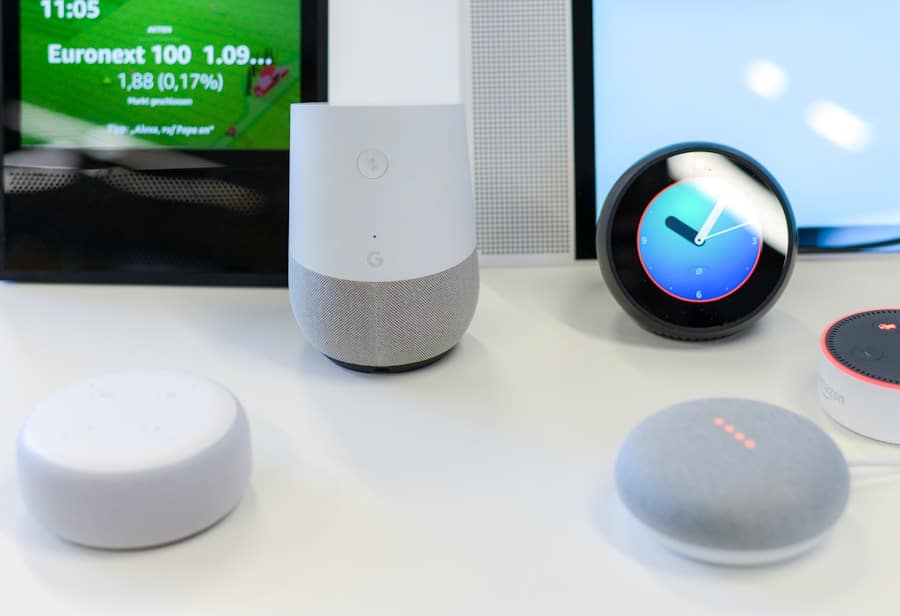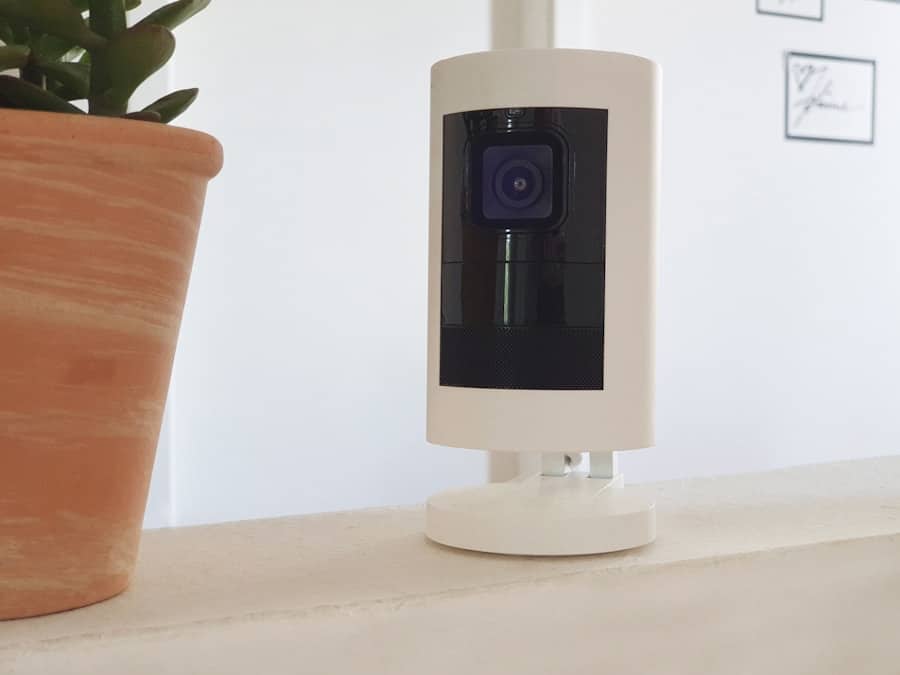The concept of smart homes has evolved significantly over the past few decades, transitioning from mere automation of household tasks to the integration of advanced artificial intelligence (AI) systems that enhance the functionality and user experience. AI-powered smart homes utilize machine learning algorithms and data analytics to create environments that are not only responsive but also predictive, adapting to the needs and preferences of their inhabitants. This transformation is not just about convenience; it represents a fundamental shift in how we interact with our living spaces, making them more intuitive and personalized.
As technology continues to advance, the integration of AI into smart home systems is becoming increasingly sophisticated. From voice-activated assistants that control lighting and temperature to security systems that learn from user behavior, AI is at the forefront of this revolution. The implications of these developments are profound, as they promise to improve energy efficiency, enhance security, and provide a level of comfort that was previously unimaginable.
In this article, we will explore the evolution of AI in smart home technology, how it learns user preferences, its benefits, potential challenges, and what the future holds for this exciting field.
Key Takeaways
- AI-powered smart homes use artificial intelligence to automate and control various devices and systems within a home.
- AI in smart home technology has evolved from simple automation to more advanced learning and predictive capabilities.
- AI learns user preferences in smart homes through data collection, analysis, and machine learning algorithms.
- The benefits of AI-powered smart homes include increased convenience, energy efficiency, and personalized experiences for users.
- Potential challenges and concerns with AI-powered smart homes include privacy issues, security risks, and the potential for AI malfunctions.
The Evolution of AI in Smart Home Technology
The journey of AI in smart home technology can be traced back to the early days of home automation, where basic programmable devices allowed users to set timers for lights or control heating systems remotely. However, these early systems lacked the intelligence to adapt or learn from user behavior. The introduction of the Internet of Things (IoT) marked a significant turning point, enabling devices to communicate with each other and share data over the internet.
This connectivity laid the groundwork for more advanced applications of AI in smart homes. As machine learning algorithms became more sophisticated, they began to play a crucial role in enhancing smart home technology. For instance, smart thermostats like the Nest Learning Thermostat utilize AI to analyze user habits and adjust heating and cooling settings accordingly.
Over time, these devices learn when occupants are home or away, optimizing energy usage without sacrificing comfort. Similarly, smart lighting systems can adjust brightness and color based on the time of day or user preferences, creating an ambiance that suits various activities. This evolution reflects a broader trend towards creating homes that are not just automated but also intelligent, capable of making decisions that improve the quality of life for their residents.
How AI Learns User Preferences in Smart Homes

At the heart of AI-powered smart homes is the ability of these systems to learn from user interactions and preferences. This learning process typically involves collecting data from various sensors and devices throughout the home. For example, smart speakers equipped with voice recognition technology can track commands given by users over time, identifying patterns in their requests.
This data is then analyzed using machine learning algorithms to create a profile of individual preferences. Consider a scenario where a family uses a smart thermostat. Initially, the thermostat may be set to a specific temperature based on general comfort levels.
However, as it gathers data on when family members are typically home or away, it begins to adjust its settings automatically. If it learns that the family prefers cooler temperatures during the night and warmer settings during the day, it can optimize its schedule accordingly. This adaptive learning not only enhances comfort but also contributes to energy savings by reducing unnecessary heating or cooling when no one is present.
The Benefits of AI-Powered Smart Homes
The advantages of AI-powered smart homes extend beyond mere convenience; they encompass a range of benefits that enhance daily living. One of the most significant benefits is energy efficiency. Smart devices equipped with AI can analyze usage patterns and optimize energy consumption accordingly.
For instance, smart lighting systems can automatically turn off lights in unoccupied rooms or adjust brightness based on natural light levels, leading to substantial energy savings over time. Moreover, AI-powered smart homes offer enhanced security features that provide peace of mind for residents. Smart security cameras equipped with facial recognition technology can distinguish between familiar faces and strangers, sending alerts when an unknown individual is detected.
Additionally, AI can analyze patterns in security footage to identify unusual behavior, such as someone loitering near the property for an extended period. These proactive measures not only deter potential intruders but also allow homeowners to monitor their properties remotely through mobile applications. Another notable benefit is improved accessibility for individuals with disabilities or elderly residents.
AI-powered devices can be programmed to respond to voice commands or even gestures, allowing users with limited mobility to control various aspects of their home environment effortlessly. For example, a person with mobility challenges can use voice commands to adjust lighting or temperature without needing to physically interact with switches or thermostats.
Potential Challenges and Concerns with AI-Powered Smart Homes
Despite the numerous benefits associated with AI-powered smart homes, there are also potential challenges and concerns that warrant consideration. One significant issue is privacy.
Data breaches have become increasingly common in recent years, raising concerns about how personal information is stored and protected by manufacturers. Additionally, there is the challenge of interoperability among different devices and platforms. Many consumers invest in various smart home products from different manufacturers, which may not always communicate effectively with one another.
This lack of standardization can lead to frustration for users who expect seamless integration across their devices. Furthermore, reliance on a single platform or ecosystem can create vulnerabilities; if that system experiences downtime or technical issues, it could render multiple devices inoperable. Another concern is the potential for over-reliance on technology.
As homes become more automated and intelligent, there is a risk that individuals may become less engaged in their living environments. For instance, if a smart home system takes over tasks such as cooking or cleaning entirely, residents may lose touch with these activities altogether. Striking a balance between leveraging technology for convenience while maintaining personal involvement in daily tasks is essential for fostering a healthy relationship with our living spaces.
The Future of AI-Powered Smart Homes

Looking ahead, the future of AI-powered smart homes appears promising as advancements in technology continue to unfold. One area poised for significant growth is the integration of AI with emerging technologies such as augmented reality (AR) and virtual reality (VR). These technologies could revolutionize how users interact with their smart homes by providing immersive experiences that allow them to visualize changes before implementing them.
For example, homeowners could use AR applications to see how different furniture arrangements would look in their living spaces or experiment with various color schemes for their walls. Moreover, advancements in natural language processing (NLP) will likely enhance voice-activated assistants’ capabilities within smart homes. As these systems become better at understanding context and nuance in human speech, users will be able to communicate more naturally with their devices.
This could lead to more intuitive interactions where users can express complex commands without needing to memorize specific phrases or keywords. Additionally, as concerns about energy consumption and environmental sustainability grow, AI-powered smart homes will likely play a crucial role in promoting eco-friendly practices. Smart grids that leverage AI can optimize energy distribution based on real-time demand and supply conditions, reducing waste and lowering costs for consumers.
Furthermore, AI can assist homeowners in monitoring their carbon footprints by providing insights into energy usage patterns and suggesting ways to reduce consumption.
Integrating AI with Other Smart Home Devices
The integration of AI with other smart home devices is essential for creating a cohesive ecosystem that enhances user experience and functionality. One prominent example is the synergy between smart speakers and other connected devices within a home. Smart speakers serve as central hubs that allow users to control various aspects of their environment through voice commands.
By integrating AI capabilities into these speakers, they can act as personal assistants that not only respond to queries but also anticipate user needs based on historical data. For instance, imagine a scenario where a user typically plays relaxing music in the evening while preparing dinner. An AI-powered smart speaker could learn this pattern over time and proactively suggest playlists or even start playing music at the appropriate time without requiring explicit commands from the user.
This level of integration creates a seamless experience where technology becomes an unobtrusive part of daily life. Furthermore, interoperability among different brands and platforms is crucial for maximizing the potential of AI-powered smart homes.
By ensuring that devices from different brands can communicate effectively with one another, users will have more flexibility in choosing products that suit their needs without being locked into a single ecosystem.
The Impact of AI-Powered Smart Homes on Daily Life
The impact of AI-powered smart homes on daily life is profound and multifaceted. As these technologies continue to evolve and become more integrated into our everyday routines, they promise to enhance convenience, security, and overall quality of life for residents. The ability of AI systems to learn from user behavior allows for personalized experiences that cater to individual preferences while promoting energy efficiency and sustainability.
However, as we embrace these advancements, it is essential to remain vigilant about potential challenges such as privacy concerns and interoperability issues among devices. By addressing these challenges proactively and fostering collaboration among manufacturers, we can create an environment where technology enhances our lives without compromising our values or security. As we look toward the future, it is clear that AI-powered smart homes will play an increasingly central role in shaping how we live and interact with our environments.
The possibilities are vast—ranging from improved accessibility for individuals with disabilities to innovative solutions for energy management—and they hold the potential to transform our homes into truly intelligent spaces that adapt seamlessly to our needs.
In a related article, Instagram Adds a Dedicated Spot for Your Pronouns, explores how the popular social media platform is adapting to user preferences by allowing individuals to display their pronouns on their profiles. This move towards personalization and customization mirrors the advancements in AI-powered smart homes that are learning user preferences to enhance the overall experience. Just as Instagram is catering to individual identities, smart homes are adapting to the unique needs and habits of their users.
FAQs
What is an AI-powered smart home?
An AI-powered smart home is a residence equipped with connected devices and appliances that are controlled and automated through artificial intelligence technology. These devices can learn user preferences and adapt to their habits over time.
How do AI-powered smart homes learn user preferences?
AI-powered smart homes learn user preferences through the collection and analysis of data from various sensors and devices within the home. This data is then processed by AI algorithms to understand patterns and behaviors, allowing the system to make personalized recommendations and adjustments.
What are the benefits of AI-powered smart homes that learn user preferences?
The benefits of AI-powered smart homes that learn user preferences include increased convenience, energy efficiency, and personalized experiences for the users. These homes can automate routine tasks, optimize energy usage, and provide tailored solutions based on individual preferences.
What are some examples of AI-powered smart home devices that learn user preferences?
Examples of AI-powered smart home devices that learn user preferences include smart thermostats that adjust temperature settings based on user habits, smart lighting systems that adapt to preferred brightness levels, and virtual assistants that personalize responses and recommendations based on user interactions.
What are the potential privacy concerns associated with AI-powered smart homes that learn user preferences?
Potential privacy concerns associated with AI-powered smart homes that learn user preferences include the collection and storage of personal data, the risk of unauthorized access to sensitive information, and the potential for data breaches. It is important for users to be aware of these concerns and take measures to secure their smart home systems.

